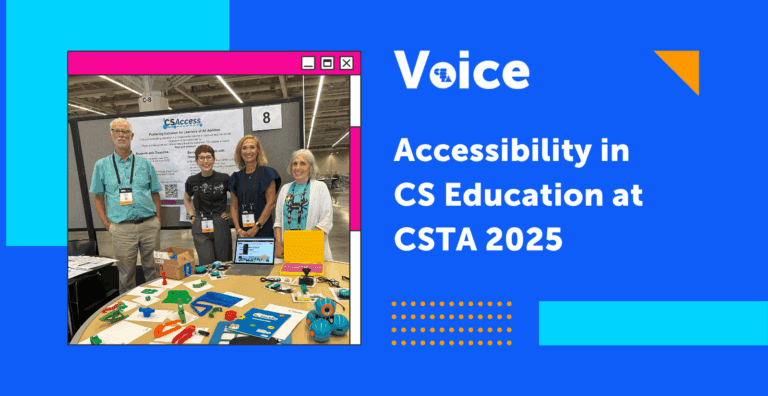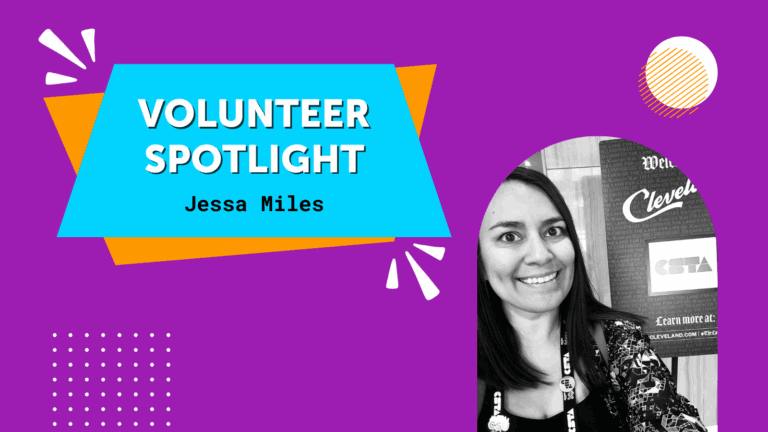
I almost didn’t graduate high school. For a long time, I was very embarrassed to say these words – I didn’t want my colleagues to think less of me and, in all honesty, it took a long time to accept this was where I had been headed.
Full Story
I almost didn’t graduate high school.
For a long time, I was very embarrassed to say these words – I didn’t want my colleagues to think less of me and, in all honesty, it took a long time to accept this was where I had been headed. My story, unfortunately, is not unique. Many adults share my experience, although our details may vary. In 2002, the year I graduated high school, four out of every 100 enrolled students elected to drop out, and for Hispanic students it was 7.1 percent [1]. My story is that of a daydreamer. I was a shy child who always did well on tests and was able to float under the radar while I made doodles in my notebook. By 4th grade, I was diagnosed with Attention Deficit Disorder and given a prescription for Ritalin. Research has found students with ADHD are more likely to drop out of high school and continue to have difficulty in the workforce [2]. My teachers throughout grade school described me as careless, creative, and a solid B student. I hated those worksheets they gave me, but the projects were my salvation. I would spend hours getting all the details just right on a poster, experiment, movie, or other presentation.
By high school, the projects dried up and so did my patience. “Why do I have to learn about _______?” I’d ask my teacher. My question was not meant to be facetious, it was meant to help me apply my learning, but it was met with derision. To be fair, I did not give the outward expression of caring much about school. The intervention team moved me into remedial classes, which was not the best placement for me as there seemed to be even less of a need to show up. Later that year, it was decided I would attend my district’s alternative education program for students who were deemed likely to drop out. I never said I was going to drop out, but looking back, it was exactly where I was headed. That might be the way it happens for many other students. One doesn’t really plan or aspire to drop out, but you get yourself in deep water and the conditions give you no other choice. Thankfully, the structures and strategies of the program tossed me a life preserver.
The dropout program had only three teachers for most of our classes so we came to know them well – we called them by their first names or nicknames. They were caring, flexible, relaxed, but they held us to the same high standards. Our classrooms had couches and plants – it was very comfortable. There was a lot of flexibility in our assignments because they knew we wouldn’t do anything without some intrinsic motivation. We had a choice in what we wrote or what we read. If we couldn’t have a choice in that, then there were choices for the assignments. There was always some way to express myself and I felt comfortable suggesting alternative assignments or just talking about my life.
In her book, “Cultivating Genius”, Gholdy Muhammad [3] writes, “I have never met an unmotivated child in my years working with youth. I have, however, “met” unmotivating curriculum and instruction.” I read these words as an adult and they resonated with me deeply. As a teacher of 11 years, I too have never met an unmotivated child. I have met children who are not connecting with the curriculum, with their teachers, or who are struggling to organize their materials or thoughts. As teachers, we can make small changes that have a big effect on student engagement and success.
Build Community
At the beginning of the year, take time to get to know your students before you dive into the content. CSTA EquityFellow, Charity Freeman, describes this time as Unit 0. Play games, develop norms, and design assignments around identity. Create a physical space where students feel comfortable. If possible, consider how the furniture, lighting, and posters make students feel welcomed and included. If customizing a space is limited, allow students the flexibility to select their seats. On the first day of class, I explain my seating policy as the assumption that students want to be here, they want to learn, and learning is more fun with friends. However, I do hold them to the standard of engagement and make it clear that if the seat is impeding their ability to learn, the seats will be adjusted. To stretch the impact of Unit 0 throughout the year, regularly collect feedback from students. Last summer, I began a fellowship with Upperline Code, an organization that takes feedback very seriously. Every day students and instructors were asked to report their perceptions of the lesson and their feelings. Sometimes we even threw in a question of the day to get to know students better. The next day we would review the feedback, make the necessary changes, and thank them for their honesty. I’ve continued this daily practice in my regular classroom.
Practice Flexibility
Teachers can also get to know students throughout the year by adding flexibility to their assignments. Allow students to suggest alterations or alternatives that meet the content goals. Years ago, a student wrote a persuasive essay about how Minecraft should be used in my class so I attended a free Minecraft workshop and began to use it as part of my filmmaking unit. I learned a little bit more about my student and demonstrated respect for his voice and power. Changes in flexibility occur in smaller ways too. Jeff Olson, a CS curriculum writer, wrote an article [4] in favor of getting rid of answer keys. The lack of an answer key sets instructors up to accept, celebrate, and consider multiple solutions to a problem as opposed to shutting down ideas in favor of the one from the answer key. Comparing solutions for efficiency can come later. This flexibility demonstrates respect for student voice and volition.
Provide Access
Students in specialized classes, such as ENL, special ed, reading services, or alternative education, may miss out on enrichment or electives because it doesn’t fit neatly into their schedules. Adults may further justify this decision by claiming these students need to focus on their areas of remediation. Like Gholdy, I am calling for an end to deficit language. “Teachers need to believe in the potential of all students regardless of their circumstances . . . [3]” and take a stand for inclusion. All students deserve access to computer science education but may need additional supports to thrive. For me, and other students with ADHD, explicit instruction on the organization of time and materials is a must. Many students fail to hand in work due to a lack of organizational strategies that aren’t explicitly taught as a subject. Insist students start by naming files and walk the room to confirm it, show how to organize loose papers into “in progress” vs “complete”, and teach systems to keep track of items before they exit your room. Finally, encourage students to ask for help and insist they stop apologizing for it. Students need to know teachers are here to help students connect with the material – we are not robots scanning to see if they were perfect on the first attempt. Let’s celebrate and encourage students to communicate their needs so we can support their journey towards graduation and beyond.
About the Author
 Lauren Berrios is a visual-spatial enrichment teacher for 1st through 5th-grade students in the White Plains City School District in New York. She is a mentor teacher for the Girls4Tech club at the 6th-grade campus and participates as a founding member of her district’s equity committee. Throughout her years as an enrichment teacher, Lauren has campaigned for flexible accommodations, which has allowed many more students to participate in computer science programming. Lauren has been teaching computer science for 6 years and is entering her 11th year of teaching. She is a Picademy Certified educator and an Upperline Code Teaching Fellow. Lauren graduated from Manhattanville College with a Masters of Arts in Teaching in Visual Arts.
Lauren Berrios is a visual-spatial enrichment teacher for 1st through 5th-grade students in the White Plains City School District in New York. She is a mentor teacher for the Girls4Tech club at the 6th-grade campus and participates as a founding member of her district’s equity committee. Throughout her years as an enrichment teacher, Lauren has campaigned for flexible accommodations, which has allowed many more students to participate in computer science programming. Lauren has been teaching computer science for 6 years and is entering her 11th year of teaching. She is a Picademy Certified educator and an Upperline Code Teaching Fellow. Lauren graduated from Manhattanville College with a Masters of Arts in Teaching in Visual Arts.Works Cited
[1] Laird, J., Lew, S., DeBell, M., & Chapman, C. (2006). “Dropout Rates in the United States: 2002 and 2003.” National Center for Education Statistics. https://nces.ed.gov/pubs2006/2006062.pdf
[2] Fredriksen, M., Dahl, A.A., Martinsen, E.W. et al. (2014) “Childhood and persistent ADHD symptoms associated with educational failure and long-term occupational disability in adult ADHD.” ADHD Atten Def Hyp Disord 6, 87-99. https://link.springer.com/article/10.1007/s12402-014-0126-1
Muhammad, G., Love, B. L., & Scholastic Inc.,. (2020). Cultivating genius: An equity framework for culturally and historically responsive literacy.
Olson, Jeff. (2021) “What if Answer Keys are Bad?” Medium. Retrieved on 14, May 2022. https://medium.com/@jolson_codes/what-if-answer-keys-are-bad-116018da2993




